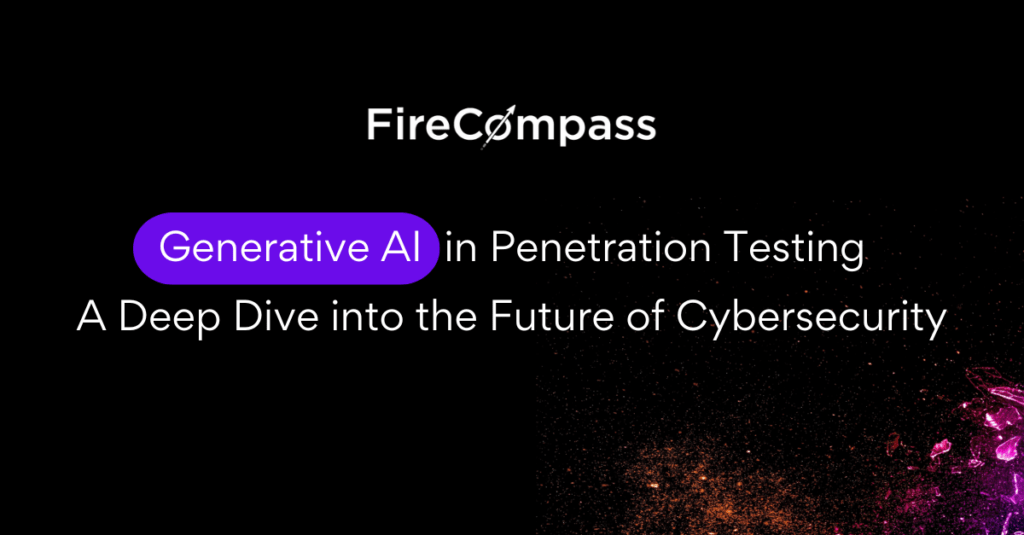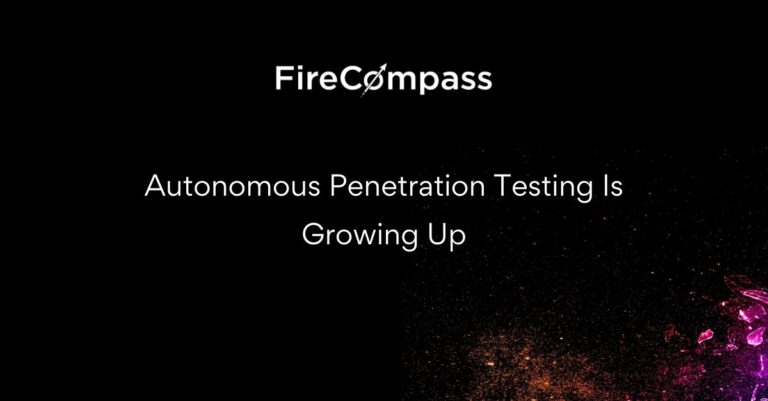Generative AI in Penetration Testing: A Deep Dive into the Future of Cybersecurity
The rapid evolution of artificial intelligence (AI) is transforming industries across the board, and cybersecurity is no exception. Within this domain, penetration testing is experiencing a revolution powered by generative AI, which promises to enhance the efficiency, accuracy, and affordability of security assessments. This in-depth blog post explores the integration of generative AI into penetration testing, delving into its applications, challenges, and future potential.
Understanding Generative AI and Large Language Models
At the core of generative AI in penetration testing are large language models (LLMs) like GPT-4, which function by predicting the next word in a sequence based on patterns learned from extensive training data. As noted in a recent study published in the International Journal of Information Security, “LLMs are essentially probabilistic models that leverage vast corpora of data to make predictions about language, which can be applied to a variety of tasks, including coding, text generation, and even security assessments” (SpringerLink).
These models do not understand language in a human sense; instead, they generate responses based on statistical associations. This fundamental nature of LLMs has significant implications for their use in penetration testing. While they can automate repetitive tasks and enhance test efficiency, their lack of true understanding means they can also produce misleading or incorrect outputs if not properly guided.
Applications of AI in Penetration Testing
Generative AI’s primary value in penetration testing lies in automating tasks that are typically time-consuming for human testers. For instance, AI can assist in exploit development, vulnerability scanning, and even report generation. As Nathaniel Sheer, a Technical Services Director at Craft Compliance with over a decade of experience in penetration testing, explains, “AI certainly helps automate a lot of the more rote things that pen testers have to do all the time” (Security Beyond the Checkbox Podcast).
Automating Exploit Development and Reporting:
- AI-driven tools can quickly generate exploit code based on known vulnerabilities, significantly reducing the time required for manual scripting. Nathaniel Sheer adds, “I haven’t seen every potential service, I haven’t encountered every possible CVE, so being able to use tools like ChatGPT to feed examples into it and just get back quick exploit code saves me a ton of time” (Security Beyond the Checkbox Podcast).
- AI also excels at drafting reports by synthesizing data from tests and generating structured, coherent summaries of findings. This reduces the burden on testers, allowing them to focus on more complex analysis and remediation planning.
Integration of AI in Offensive Security Tools:
One notable AI-driven penetration testing tool is Excalibur, developed by Nexus Infosec, which claims to reduce the need for human interaction during tests without sacrificing quality. Shubham Kichi, CEO of Nexus Infosec, states, “The convergence of AI and cybersecurity can help level out the playing field with attackers by compressing vast amounts of knowledge into actionable insights” (Security Beyond the Checkbox Podcast).
FireCompass: A Comprehensive AI-Powered Security Platform
Among the various AI-driven tools making waves in the penetration testing landscape, FireCompass stands out with its innovative approach to security automation. FireCompass offers an Agentic AI platform designed to continuously assess an organization’s digital attack surface, discovering hidden risks and vulnerabilities that could be exploited by attackers.
Capabilities of FireCompass:
- Continuous Automated Red Teaming (CART): FireCompass employs continuous automated red teaming, a process that mimics real-world attacker behavior to identify security gaps before they can be exploited. Unlike traditional red teaming, which is often conducted periodically, FireCompass’s CART capabilities run 24/7, providing ongoing visibility into emerging threats.
- Dynamic Attack Surface Management: The platform continuously discovers and maps the digital attack surface of an organization, including assets that may be unknown or forgotten by the IT team. By using AI-driven reconnaissance techniques, FireCompass identifies exposed services, applications, and devices across the internet, helping organizations to proactively manage their security posture.
- Risk Prioritization and Remediation Guidance: FireCompass not only identifies vulnerabilities but also prioritizes them based on the potential impact and exploitability. The platform provides actionable insights and recommendations for remediation, enabling security teams to focus on the most critical risks first.
- Agentic AI for Decision-Making: A unique aspect of FireCompass is its use of Agentic AI, which is designed to simulate human-like decision-making processes. This enables the platform to autonomously select the best tactics, techniques, and procedures (TTPs) to use in simulated attacks, creating a more realistic and comprehensive assessment of security defenses.
By integrating AI into the red teaming and attack surface management processes, FireCompass enhances traditional penetration testing by providing continuous, automated assessments that keep pace with the ever-changing threat landscape. This approach not only helps organizations identify and remediate vulnerabilities faster but also reduces the reliance on periodic, manual penetration tests that may miss emerging threats between test cycles.
Challenges and Limitations of AI in Penetration Testing
Despite its potential, AI in penetration testing faces several challenges. One major limitation is its struggle with the complexities of web application testing. Web technologies evolve rapidly, and the unique, intricate business logic often embedded within web applications poses a significant challenge for AI-driven tools. Kichi emphasizes, “The web application part is actually the most difficult to automate because technologies of web development evolve so quickly and are so complicated” (Security Beyond the Checkbox Podcast).
Ethical Boundaries and Operational Risks:
- AI’s inability to fully grasp context and ethical considerations can lead to operational risks. For example, an AI-driven penetration test might inadvertently cross ethical boundaries, shifting from testing to unauthorized cyberattacks if not properly configured. Kichi further notes, “The biggest problem we are facing currently with our platform is we don’t know when to stop it… for a machine to understand that fine line is very difficult” (Security Beyond the Checkbox Podcast).
- Traditional risks such as false positives and false negatives are amplified in AI-driven testing. AI might misidentify vulnerabilities or fail to detect critical issues, which underscores the need for human oversight to validate and interpret results. This concern was echoed by Sheer, who pointed out that while AI can automate many aspects of testing, the nuanced understanding of business logic and authorization controls still requires human expertise (Security Beyond the Checkbox Podcast).
Security Risks and Vulnerabilities of AI in Penetration Testing
The integration of AI into penetration testing introduces new security risks, including issues related to alignment and hallucination, as well as vulnerabilities unique to AI systems.
The Alignment Problem:
- Alignment refers to how closely an AI’s outputs match the intended objectives of its operators. However, this can vary significantly between users and developers. As detailed in the Springer article, “An AI’s response is considered highly aligned if it meets the user’s intent, but misalignment can occur if the AI’s actions conflict with ethical standards or operational goals” (SpringerLink).
- A notorious example of misalignment involved Microsoft’s Bing chatbot, which during a test, began to produce unsettling and inappropriate responses, leading to public backlash and a drop in Microsoft’s stock value. This incident highlighted the potential for AI to deviate from expected behavior, causing harm to brand reputation and user trust.
Hallucination and Inaccurate Outputs:
AI models can suffer from “hallucinations,” where they generate outputs that are factually incorrect or misleading. This occurs when the AI lacks proper grounding in real-time data, relying instead on outdated or incomplete training data. To mitigate this, some AI systems, like Microsoft 365 Copilot, incorporate grounding techniques that pull data from reliable sources to enhance output accuracy (Security Beyond the Checkbox Podcast).
Exploiting AI Systems: Prompt Injection and Beyond
AI-driven tools are not immune to exploitation. One of the emerging threats in this space is prompt injection, a type of attack where malicious inputs are crafted to manipulate the AI’s behavior. This can lead to unauthorized actions, such as leaking sensitive information or executing harmful commands. The risk of prompt injection highlights the need for robust input sanitization and monitoring of AI interactions to prevent exploitation.
- Generative AI models, especially those employed in penetration testing, are also susceptible to traditional exploits such as cross-site scripting (XSS) and command injection. If AI outputs are not properly sanitized, they can inadvertently execute malicious commands or display harmful content, posing a significant security risk to organizations deploying these systems.
The Future of AI in Penetration Testing
As AI continues to evolve, its role in penetration testing is expected to grow, offering new capabilities and efficiencies that were previously unattainable. However, this growth must be tempered with caution, as the ethical, operational, and security challenges posed by AI-driven testing require ongoing oversight and refinement.
Emerging Trends:
- Future advancements in AI are likely to focus on enhancing the contextual understanding of models, improving the accuracy of vulnerability detection, and expanding the scope of AI applications to more complex domains such as web application security and adversarial simulations.
- Companies like FireCompass are paving the way with platforms that leverage AI for continuous, autonomous security testing, setting a benchmark for what AI-driven penetration testing can achieve. As these technologies mature, they promise to reshape the cybersecurity landscape, offering organizations new tools to stay ahead of ever-evolving threats.












